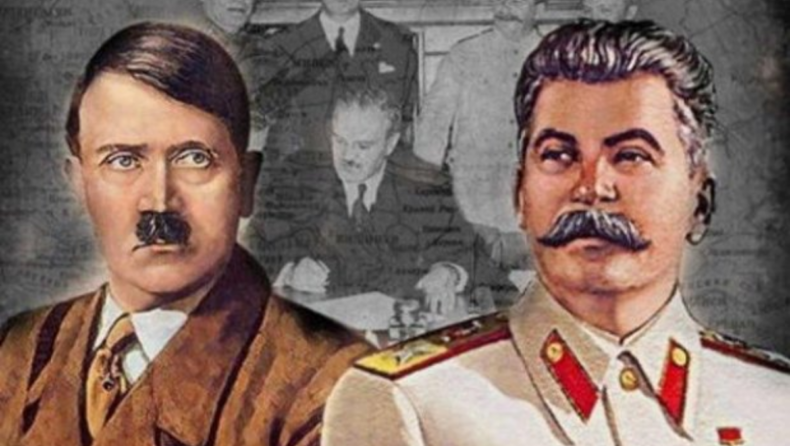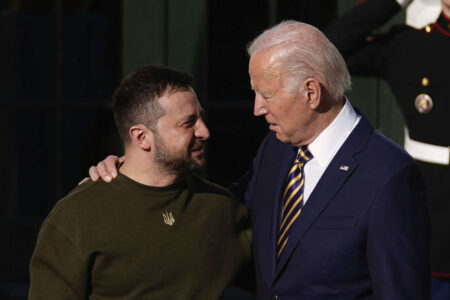
The Nazi-Soviet Non-Aggression Pact was signed on August 23, 1939, by representatives from Nazi Germany and the Soviet Union. It is also known as the German-Soviet Non-Aggression Pact and the Ribbentrop-Molotov Pact. It was a mutual promise made by the two leaders guaranteeing that neither would attack the other.
With the inevitability of World War II, Germany signed the pact to protect itself from having to fight a two-front war. As part of a secret addendum, the Soviet Union was given land, including parts of Poland and the Baltic States.
The pact was broken less than two years later, on June 22, 1941, when Nazi Germany attacked the Soviet Union.
The Meeting of the Two Parties
German Foreign Minister Joachim von Ribbentrop contacted the Soviets on August 14, 1939, to arrange a deal. In Moscow, Ribbentrop met with Soviet Foreign Minister Vyacheslav Molotov, to work on two pacts. The First was an economic agreement and the second was a non-aggression pact between Nazi Germany and the Soviet Union.
The Economic Agreement
On August 19, 1939, Ribbentrop and Molotov signed the first pact, an economic trade agreement. The agreement helped Germany bypass the British blockade during World War II’s early years. It required the Soviet Union to provide food and raw materials to Germany in return for goods such as German machinery for the Soviet Union.
The Non-Aggression Pact
Ribbentrop and Molotov agreed to sign the Nazi-Soviet Non-Aggression Pact on August 23, 1939. Four days after the economic agreement was signed, World War II broke out just over a week before.
This agreement stated publicly that Germany and the Soviet Union would not attack each other. Also, any disagreement between the two countries would be resolved amicably. The pact was supposed to last ten years, but it only lasted two.
The agreement included a clause stating that the Soviet Union would not intervene if Germany invaded Poland. As a result, if Germany went to war against the West particularly France and the United Kingdom over Poland, the Soviets guaranteed that they would not join the conflict. This would prevent Germany from opening a second front.
What Was Hitler’s Motivation for the Pact?
In World War I, Germany’s participation in a two-front war divided its forces, weakening and undermining its offensive strength. Adolf Hitler, the German dictator, was determined not to make the same mistakes as he prepared for war in 1939. While he had hoped to gain Poland without force, he recognised the need to reduce the risk of a two-front war resulting from the invasion.
The pact came after the complete collapse of British-Soviet-French negotiations for a trilateral alliance in early August 1939 on the Soviet side. According to Russian sources, the alliance fell apart because Poland and Romania refused to allow Soviet military forces to pass through their countries. However, it is also true that Russian Premier Joseph Stalin mistrusted British Prime Minister Neville Chamberlain. And also, the Conservative Party in England, believed they would not fully support Russian interests.
As a result, discussions for a Nazi-Soviet Non-Aggression Pact began.
A secret protocol held between the Nazis and the Soviets had a significant impact on Eastern Europe. Germany gave the Soviets the Baltic States in exchange for the Soviets agreeing to stay out of the impending war, leaving Poland divided along the Narew, Vistula, and San rivers.
Pact Forms, Then Disintegrates
On the morning of September 1, 1939, when the Nazis attacked Poland, the Soviets stood by and watched. World War II began two days later when the United Kingdom declared war on Germany. On September 17, Soviet troops arrived in eastern Poland to occupy their “sphere of influence,” as mentioned in a secret protocol.
In this way, the Nazi-Soviet Non-Aggression Pact effectively prevented the Soviet Union from fighting Germany. It allowed Germany to succeed in its attempt to protect its borders from a two-front war.
Until Germany’s surprise attack and invasion of the Soviet Union on June 22, 1941, the Nazis and the Soviets adhered to the terms of the pact and protocol. On July 3, Stalin announced his dissolution of the non-aggression pact and declaration of war on Germany in a radio broadcast. On July 12, the Anglo-Soviet Mutual Assistance Pact was signed into force.
edited by :- yasha malik













